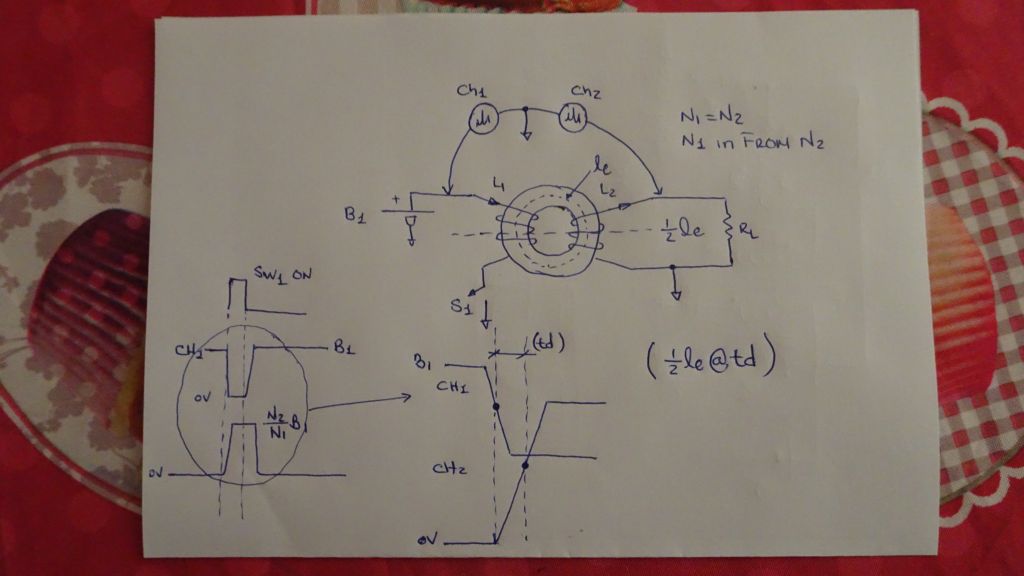Quoting:YoElMiCrO
Hello everyone.
@ Vasile
I think this image answers your question.
Anything let me know!

YoElMiCrO.
Thank you for the effort, but please clarify the following:
1)The formula that I am supposed to use for measuring the speed of the electromagnetic wave in the core is (1/2 le@td) ?
2) What is "le", what is "@" and what is "td"?
3) I am looking at your osciloscope diagram (the one in the middle). Let us suppose the power source has 12 V. On the moment of switch on the voltage drops because we have a load in the system (Inductance 1, L1). After some time it stabilises at 10V lets say, thats why we have the straight line. Looking on CH2, we notice that the waveform has a delay in appearing, meaning it does not appear instantly. So the first dot when calculating "td", is when the secondary voltage waveform starts appearing?. Also what is the second dot? Is it the middle voltage moment of the rising voltage waveform in the secondary?
4)What is N1, N2 and B1? And also the formula N2/N1*B1
Regards.





